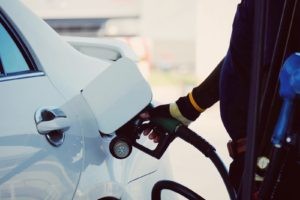Water contamination in your car’s gas tank is a more common issue than many drivers realize, and it’s crucial to address it promptly to prevent potential engine damage. Moisture can find its way into your fuel tank in various ways, from condensation due to temperature fluctuations to contamination during refueling, especially in humid conditions. Recognizing the symptoms early and knowing how to fix the problem can save you from costly repairs.
Recognizing the Symptoms of Water in Your Fuel Tank
One of the first and most noticeable signs of water in your gas tank is performance issues, particularly with acceleration. You might experience hesitation or sluggishness when you press the accelerator, especially when trying to reach higher speeds on the highway. This occurs because water in the fuel disrupts the combustion process, leading to inconsistent power delivery.
Another symptom to watch out for is erratic engine behavior. This can manifest as sudden changes in speed without any input from you, often described as sputtering or bucking. If your car sputters, especially under acceleration even with a sufficient amount of fuel in the tank, it’s a strong indicator of water-contaminated gasoline. The engine might also run rough or idle unevenly, further pointing towards fuel delivery problems caused by water.
Addressing Water Contamination in Your Gas Tank
The most effective way to eliminate water from your car’s gas tank is by draining the tank completely and refilling it with fresh, uncontaminated gasoline. While this might seem like a drastic measure, it’s often the most reliable solution, especially if you suspect a significant amount of water is present. The potential damage caused by water in the fuel system, such as rust and corrosion, and engine damage, far outweighs the cost of draining and refilling the tank.
For minor water contamination, fuel additives designed to remove water from the fuel system can be effective. Products like Iso-HEET® Fuel Line Antifreeze & Injector Cleaner are specifically formulated to absorb water and allow it to be safely burned off during normal engine operation. However, it’s important to note that fuel additives are only suitable for small amounts of water. If there is a substantial quantity of water in the tank, these additives may not be sufficient.
If you are uncomfortable performing these procedures yourself, or if the problem persists after attempting DIY fixes, it’s advisable to seek professional help from a qualified mechanic. Ignoring water in your gas tank can lead to significant engine problems and expensive repairs down the line. Addressing it promptly ensures the longevity and reliable performance of your vehicle.


